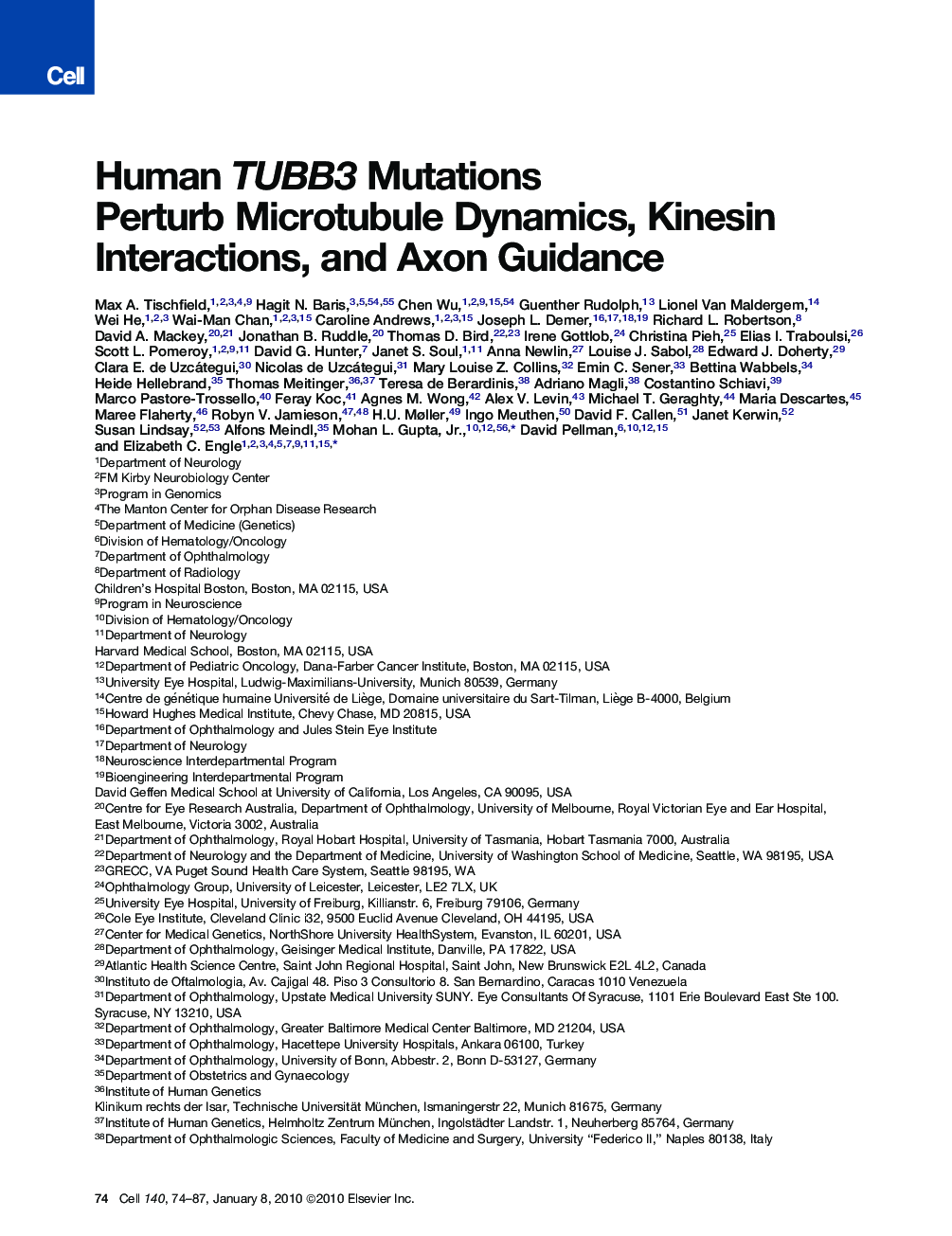| Article ID | Journal | Published Year | Pages | File Type |
|---|---|---|---|---|
| 2036484 | Cell | 2010 | 14 Pages |
SummaryWe report that eight heterozygous missense mutations in TUBB3, encoding the neuron-specific β-tubulin isotype III, result in a spectrum of human nervous system disorders that we now call the TUBB3 syndromes. Each mutation causes the ocular motility disorder CFEOM3, whereas some also result in intellectual and behavioral impairments, facial paralysis, and/or later-onset axonal sensorimotor polyneuropathy. Neuroimaging reveals a spectrum of abnormalities including hypoplasia of oculomotor nerves and dysgenesis of the corpus callosum, anterior commissure, and corticospinal tracts. A knock-in disease mouse model reveals axon guidance defects without evidence of cortical cell migration abnormalities. We show that the disease-associated mutations can impair tubulin heterodimer formation in vitro, although folded mutant heterodimers can still polymerize into microtubules. Modeling each mutation in yeast tubulin demonstrates that all alter dynamic instability whereas a subset disrupts the interaction of microtubules with kinesin motors. These findings demonstrate that normal TUBB3 is required for axon guidance and maintenance in mammals.
Graphical AbstractFigure optionsDownload full-size imageDownload high-quality image (332 K)Download as PowerPoint slideHighlights► TUBB3 mutations in humans cause ocular motility defects and nervous system disorders ► The neuronal tubulin isotype TUBB3 is required for axon guidance in humans and mice ► TUBB3 mutations alter microtubule dynamics and microtubule-kinesin interactions ► TUBB3 plays a unique role in neurons, distinct from other tubulin isotypes
